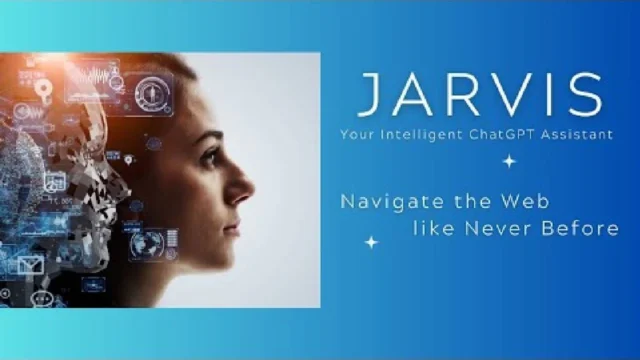
In a surprising turn of events, Google inadvertently offered the world a glimpse into its ambitious AI future. A preview of “Jarvis,” an AI assistant with the potential to revolutionize how we interact with computers, was briefly leaked on the Chrome Web Store. This unexpected reveal has sparked excitement and perhaps a touch of apprehension about a future where AI takes a more central role in our digital lives.
This article delves into the details of the leaked Jarvis prototype, exploring its capabilities, potential implications, and the broader context of AI development at Google. We’ll examine what this accidental leak tells us about Google’s AI strategy and what it could mean for the future of computing.
What is Jarvis?
Jarvis, named after Tony Stark’s iconic AI assistant in the Iron Man franchise, is Google’s next-generation AI that aims to be more than just a helpful companion. While still in its prototype phase, Jarvis promises to go beyond conventional AI functions like setting reminders or answering questions. The leaked information suggests that Jarvis can take control of a computer to perform tasks such as:
- Booking tickets: Imagine Jarvis autonomously navigating airline websites, comparing prices, selecting seats, and completing your booking without any human intervention.
- Buying groceries: Need to restock your pantry? Jarvis could potentially browse online stores, add items to your cart, and even place the order for you.
- Conducting research: Jarvis could potentially sift through countless web pages, compile relevant information, and present it in a concise and understandable format.
Essentially, Jarvis is designed to automate mundane, time-consuming tasks, freeing users to focus on more creative and engaging activities.
The Accidental Leak: A Glimpse Behind the Curtain
The Jarvis prototype briefly appeared on the Chrome Web Store, described as “a helpful companion that surfs the web for you.” This description, along with the ability to “take control of a computer,” immediately caught the attention of tech enthusiasts and media outlets alike.
Unfortunately for those eager to test Jarvis firsthand, the prototype was not fully functional. A reporter who attempted to use the AI was met with access restrictions, preventing any task execution. Google swiftly removed the Jarvis store page by midafternoon, ahead of its anticipated official launch expected in December.
Jarvis’ Capabilities: Beyond Basic Automation
While the leaked prototype was not operational, the available information suggests that Jarvis possesses capabilities that go beyond basic automation. It’s designed to understand complex queries and execute multi-step tasks that typically require human intervention.
For instance, imagine asking Jarvis to “plan a vacation to Hawaii.” This seemingly simple request involves numerous sub-tasks:
- Researching destinations: Identifying suitable locations in Hawaii based on your preferences.
- Finding flights and accommodation: Searching for the best deals on flights and hotels.
- Creating an itinerary: Suggesting activities and attractions based on your interests.
Jarvis is purportedly capable of handling such complex requests, demonstrating a level of sophistication that sets it apart from current AI assistants.
The Technology Behind Jarvis: Google’s AI Prowess
Jarvis is built upon Google’s extensive expertise in artificial intelligence, leveraging advanced machine learning models and natural language processing capabilities. While the exact technical details remain under wraps, it’s likely that Jarvis utilizes a combination of:
- Large Language Models (LLMs): These models, trained on massive datasets of text and code, enable Jarvis to understand and generate human-like text, crucial for interacting with websites and applications.
- Computer Vision: This technology allows Jarvis to “see” and interpret visual information on web pages, enabling it to interact with graphical user interfaces.
- Reinforcement Learning: This technique helps Jarvis learn from its interactions and improve its performance over time.
By combining these cutting-edge technologies, Google aims to create an AI assistant that can truly understand and execute complex tasks in the digital realm.
Implications of Jarvis: A New Era of Computing?
The emergence of Jarvis, even in its prototype stage, hints at a future where AI plays a more active role in our digital lives. Imagine a world where:
- Productivity soars: Jarvis could automate tedious tasks, freeing up valuable time for more creative and strategic endeavors.
- Accessibility improves: Jarvis could assist individuals with disabilities in navigating the digital world, making technology more inclusive.
- New possibilities emerge: Jarvis could unlock novel ways of interacting with computers, leading to innovative applications and services.
However, the rise of AI assistants like Jarvis also raises important questions:
- Security and privacy: How can we ensure that AI assistants are used responsibly and ethically, protecting user data and preventing malicious activities?
- Job displacement: Will AI assistants automate jobs currently performed by humans, leading to economic disruption?
- Human-computer interaction: How will our relationship with computers evolve as AI assistants become more prevalent?
These are complex questions that society will need to address as AI continues to advance.
Google’s AI Strategy: Jarvis and Beyond
The development of Jarvis aligns with Google’s broader AI strategy, which focuses on creating intelligent systems that can understand and interact with the world in a more human-like way. Google has been investing heavily in AI research and development, and Jarvis is just one example of its ambitious plans.
Other notable AI initiatives from Google include:
- Gemini: A multimodal AI model capable of understanding and generating text, images, and code.
- LaMDA: A conversational AI model that can engage in open-ended dialogue.
- Bard: An AI chatbot that can answer questions and generate different creative text formats.
These projects, along with Jarvis, demonstrate Google’s commitment to pushing the boundaries of AI and its potential applications.
The Future of Jarvis: What to Expect
While the leaked prototype provided a tantalizing glimpse of Jarvis, it’s still unclear when the AI assistant will be officially released. Google is expected to unveil Jarvis in December, alongside the latest version of its Gemini AI model.
It’s likely that the initial release of Jarvis will focus on a limited set of tasks and functionalities, gradually expanding its capabilities over time. As Jarvis learns and evolves, it could potentially become an indispensable tool for navigating the increasingly complex digital world.
The accidental leak of Jarvis has provided a fascinating preview of Google’s AI ambitions. While the technology is still in its early stages, it has the potential to transform how we interact with computers, automating tasks, and opening up new possibilities.
As AI continues to advance, it’s crucial to engage in thoughtful discussions about its implications, ensuring that these powerful technologies are used responsibly and ethically. By embracing the AI revolution with careful consideration, we can harness its potential to improve our lives and create a more innovative and inclusive future.











